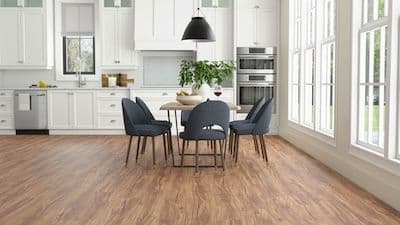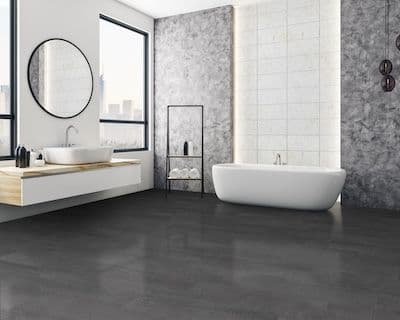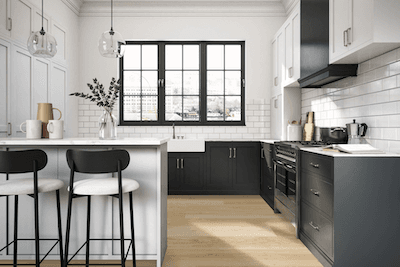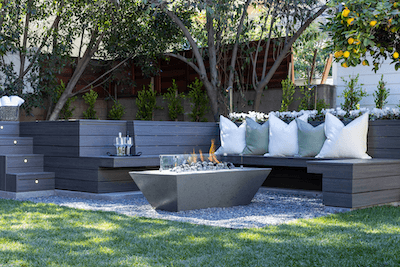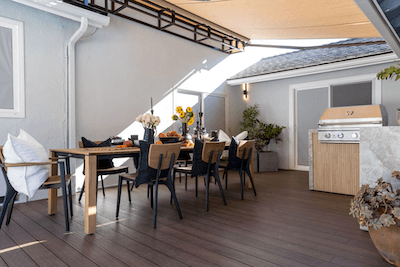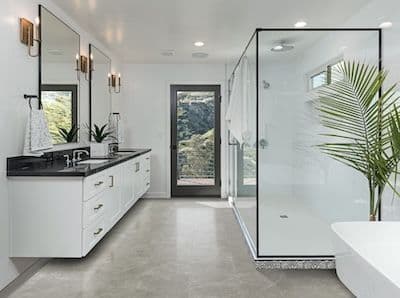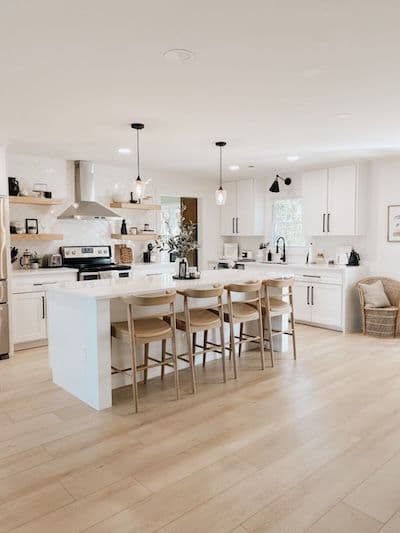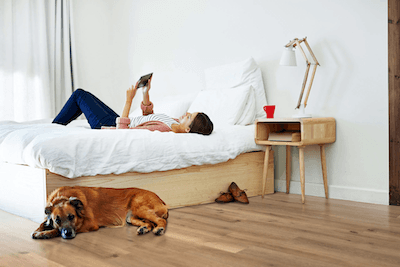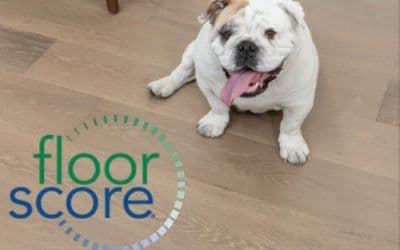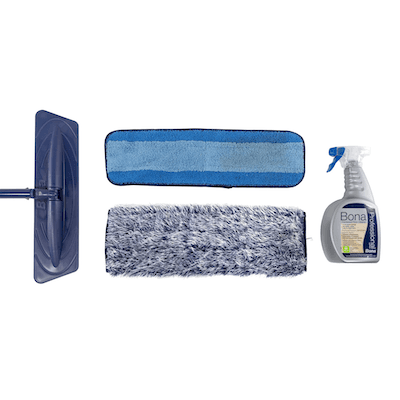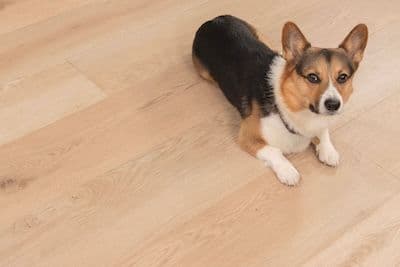Bamboo Flooring: Pros, Cons, and More
2024-11-21, Walker Hicks
Share:
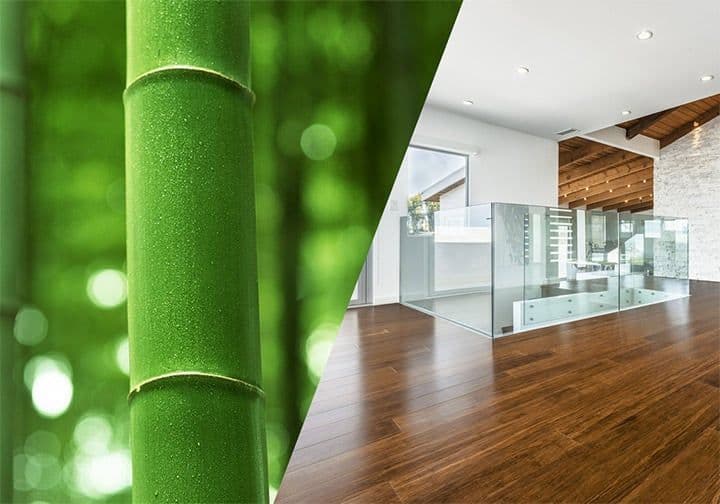
Bamboo flooring has always been a favorite among more eco-minded home designers. Now, it’s gaining renewed popularity, not just for its sustainability cred, but for its incredible durability and beauty. This all makes bamboo flooring a great alternative to traditional hardwood. However, like any flooring option, it has its own advantages and drawbacks, especially depending on where you’re getting your product from. CALI launched in 2014 as a bamboo building products company (we used to be called Cali Bamboo), and we remain the nation’s leading importer of top-quality bamboo flooring. All to say, we’ve been in the bamboo biz a long time, and we know how to work with this remarkable resource to give you a floor your family can fully rely on.
In this piece, we’re going to delve into the pros and cons of bamboo flooring and offer some tips to help you determine whether this versatile flooring material aligns with your home’s needs and your lifestyle. We’ll also cover the need-to-knows of assessing the quality of bamboo flooring, as well as how to properly install it.
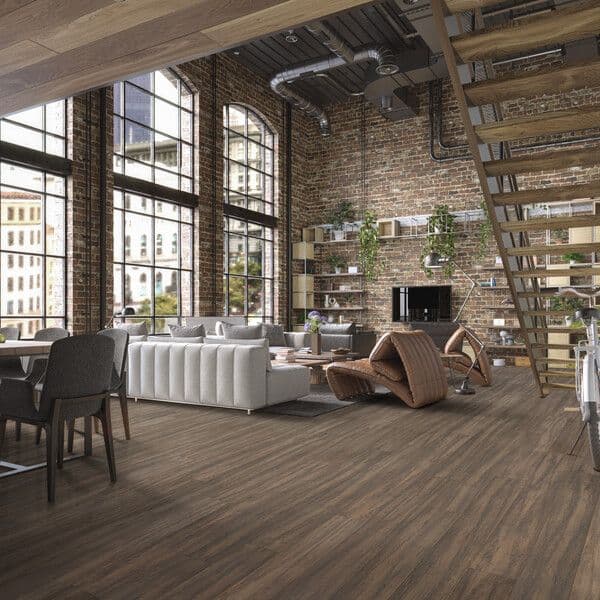
Pros of Bamboo Flooring:
- Eco-Friendly: Bamboo is a sustainable resource and one of the fastest-growing plants on Earth, making it a highly environmentally friendly choice. You can harvest bamboo for flooring every 5 to 7 years without damaging the plant itself or the surrounding land. This helps to prevent land degradation, soil erosion, and habitat loss. Because the bamboo is merely trimmed from the plant and not cut down entirely, less CO2 is released into the atmosphere.
- Durability: A quality bamboo flooring product like CALI’s can be over twice as hard as traditional hardwoods, offering great durability, especially in high-traffic areas. We know this from testing planks using the Janka Hardness Test which notes the amount of pressure it takes to press a steel ball into a plank. White oak, a common wood species used for flooring, gets a Janka score of about 1,360. CALI’s bamboo planks consistently score in the 5,000 range, meaning they’re extra dense and very difficult to dent. Learn more about the Janka Hardness Test here.
- Beauty & Versatility: Bamboo flooring provides a modern, sleek look that can complement various home styles. The material is extremely versatile and can be stained to give you a wide range of tones and colors, from light tan tones to rich, chestnut colors. Planks can also be hand-scraped or distressed to deliver a more rustic, weathered texture. Antique Java is one of our most popular bamboo floors and is a prime example of this distressed plank style.
- Cost-Effective: Depending on the brand, bamboo flooring is generally more affordable than many hardwood options.
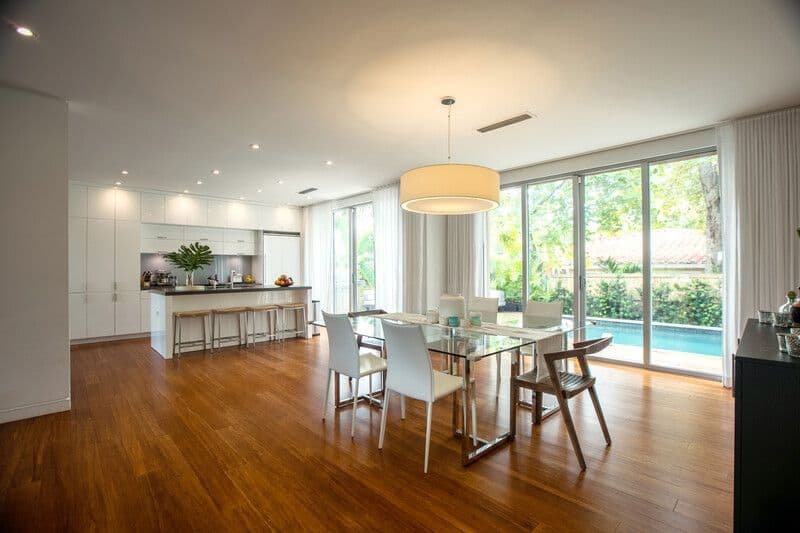
Cons of Bamboo Flooring:
- Moisture Sensitivity: Like traditional wood, bamboo is hygroscopic, meaning it can expand or contract in response to changes in moisture levels. Because of this, if not installed properly, bamboo can be prone to warping in humid conditions. You can avoid issues by acclimating the planks fully and following all pre-installation steps. When properly installed, bamboo flooring can be as resilient and stable as traditional hardwood.
- Scratching: While durable, bamboo can still be scratched by pets or heavy furniture. If it’s protected by a 10-coat premium finish (the way that CALI bamboo flooring is) it will not scratch any more than a quality hardwood floor.
- Inconsistent Quality: The quality of bamboo flooring can vary greatly depending on the manufacturer. This is why it’s so important to pick a reputable supplier with a long history of successful bamboo flooring projects. (Ahem 😊)
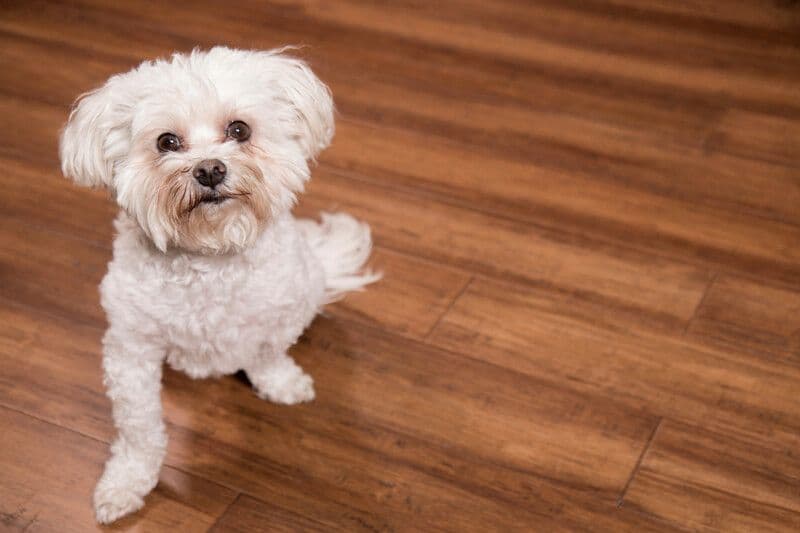
What Do I Need to Know About Determining the Quality of Bamboo Flooring?
Going green is now a trending theme for nearly every industry. As awareness grows for the critical importance of protecting our natural resources, more and more people are willing to explore sustainable building options — including bamboo flooring. The problem, however, is that there is a lot of contradictory information on bamboo flooring quality. Learn more in our article on the top ten bamboo flooring myths.
At CALI, we want to give you an accurate understanding of how bamboo is sourced, manufactured, acclimated, installed, and maintained to address any concerns and help you make an informed decision when choosing your flooring.
Bamboo Flooring's Origin Story
Before diving in, let's start with the story of bamboo. In many cases, it begins in the heart of China’s Anhui province – a natural habitat for Moso bamboo, the species most renowned for strength, hardness, and versatility. Moso bamboo grows at a rate that far exceeds the human ability to harvest it. This remarkable resource is self-sustainable and has been used for centuries due to its natural structural properties. As the popularity of bamboo rises, the costs associated with sourcing and producing it are driven down. This has allowed Moso to become a competitive material in today's building market.
The first models of bamboo flooring launched in the 1990s but had several setbacks. The initial product wasn't very aesthetically pleasing and was susceptible to denting. The good news? Since that time, manufacturing processes have improved so much that they are now capable of producing a product that can outperform even the hardest of traditional hardwoods. The bad news? Bamboo manufacturing is not currently subjected to strict quality control standards, which leaves it vulnerable to companies who want to cut corners. Differences are often hard to determine with the naked eye, so it is crucial to understand other ways to differentiate between low-cost and high-quality bamboo flooring.
How to Determine Low vs High-Quality Bamboo Flooring
- Bamboo Harvest Age
High Quality: Harvested at peak (5-7 years)
Low Quality: Harvested still soft (younger than 5 years) - Post-Harvest Bamboo Drying
High Quality: Dried to 6-8% moisture
Low Quality: Dried to 8-12% moisture - Janka Hardness Rating of Flooring
Traditional Quality: 1,000-2,000 pounds
Very High Quality: 4,000-5,000 pounds - Floor Volatile Organic Compounds (VOC) Testing
Typical Air We Breathe: ~.02 PPM
High-Quality Bamboo: ~.003 PPM
How Do I Test Bamboo Flooring Quality at Home?
If you have samples, you can also compare bamboo flooring by weight and scratch resistance. Lower quality bamboo flooring will be lighter, while higher quality bamboo will be heavier due to the amount of bamboo fiber pressed into the final product. Conducting your own scratch test on the samples is another great way to distinguish the more durable, high-quality material which should be protected by a better finish.
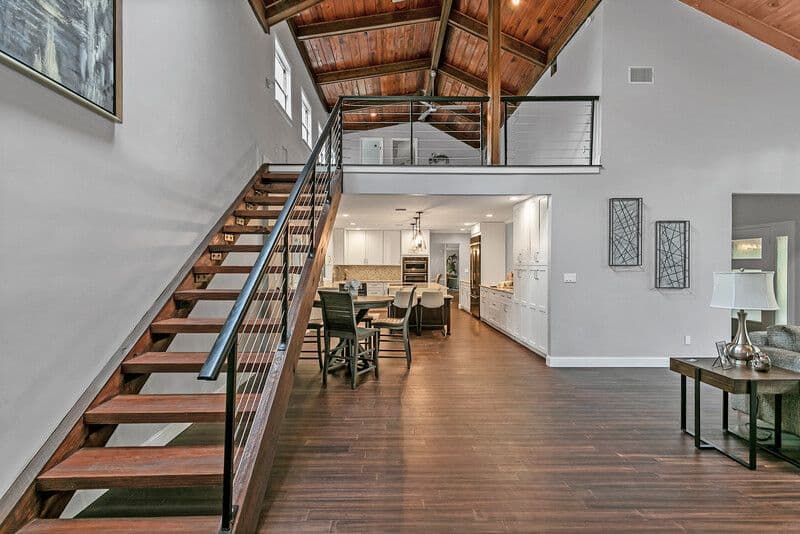
Harvesting and Manufacturing Quality Bamboo
The quality of bamboo floors begins with the very first step: harvesting. Most high-grade bamboo flooring uses Moso bamboo harvested at its peak strength, which is around 5-7 years. Low-quality floors, on the other hand, use younger bamboo, which makes them softer. Quality bamboo is thoroughly dried to 6-8% moisture, while low-quality floors dry to 8-12% — cutting time to market and saving on labor, but resulting in less durable flooring.
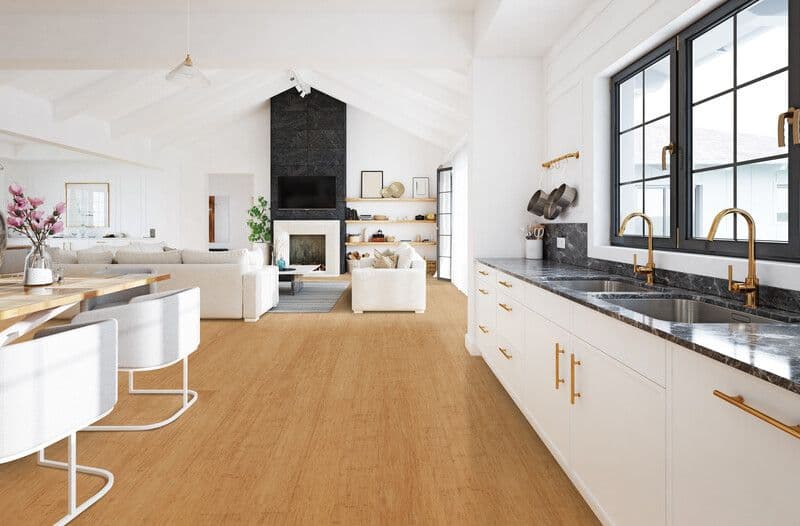
How Durable is Bamboo Flooring?
A second way manufacturers can cut corners is with the amount of bamboo used in each plank. The true test? Holding samples in hand. Heavier samples indicate quality and durability, while lighter samples suggest inadequate density and planks that may bend and even break. Apart from in-hand testing, the easiest way to determine the durability of bamboo flooring is to reference its “Janka hardness rating”. This score (achieved through a process of applying thousands of pounds of pressure) helps determine how well the floor will hold up under weight, as well as its potential for denting. Many traditional hardwood floors and bamboo floors will rank in the 1,000-2,000 pound range for Janka hardness, while many CALI floors rank upwards of 5,000.
Check out this vintage CALI video for a look at how strong our bamboo floors are – even back in the day.
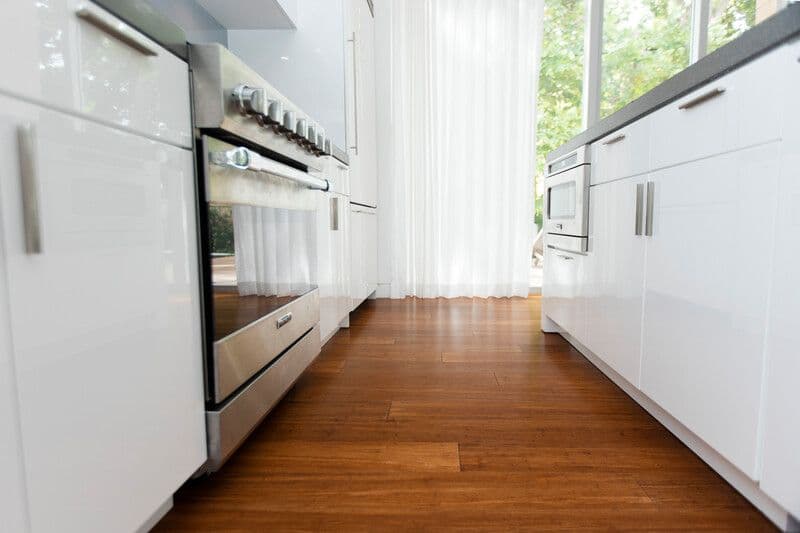
Bamboo Finish
The next key factor in choosing bamboo flooring should be the quality of the finish applied to protect the flooring surface. Some manufacturers use fewer coats of finish or a lower quality formula, which shortens production time and lowers cost, but means more scratches and damage in the long run. Trusted manufacturers, like CALI, utilize multiple coats to protect the floor from wear, and opt for a premium aluminum oxide finish – the same typically used to protect high-end hardwood planks. CALI’s solid bamboo flooring is protected by 10 coats of finish, and our engineered planks sport 13 coats. If you're looking at options from various manufacturers, performing a simple scratch test on bamboo flooring samples can help determine the quality of the finish.
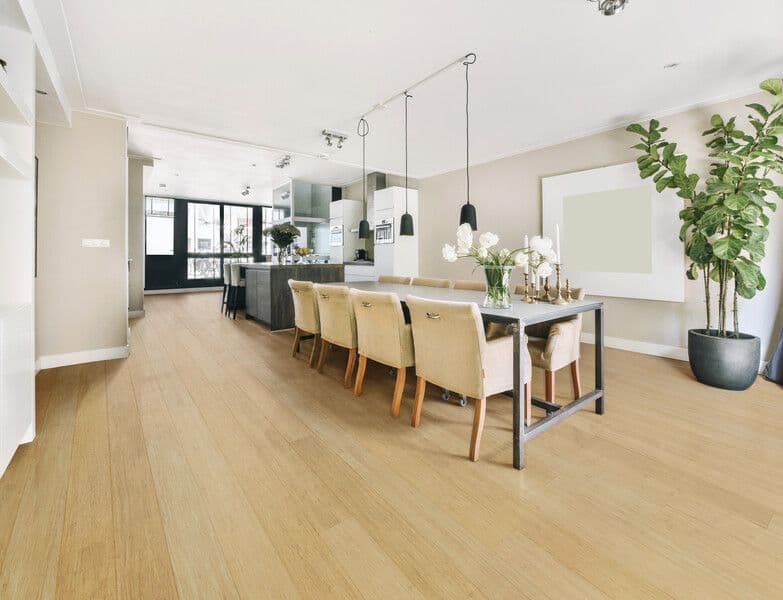
VOCs and Bamboo
A final factor in determining the quality of bamboo floors is the type of adhesives used. Once the bamboo poles are harvested and dried, they are shredded into very fine fibers that need to be pressed and bonded into blocks that can be sliced into planks. Many manufacturers use inferior glues that not only affect the integrity of the product but contain and release toxic chemicals. These chemicals can be harmful to homeowners and their families when ingested through off-gassing (a process by which installed materials slowly release carcinogens into the surrounding atmosphere). “Volatile Organic Compounds” (VOCs) like these can pose serious health risks to anyone but are especially dangerous for young children due to the vulnerability of their developing respiratory systems. All CALI bamboo floors use peak-harvested Moso bamboo that is dried to 6-8% moisture, and every floor has ultra-low VOCs to protect our customers and their families.
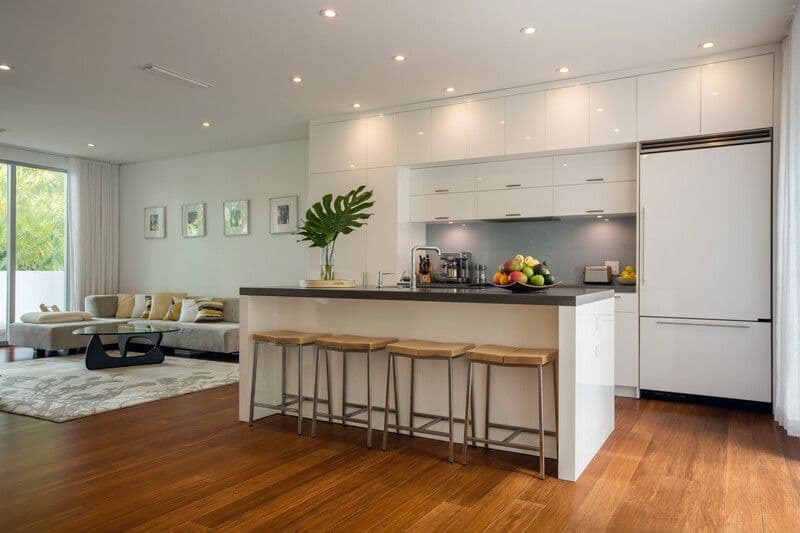
Engineered Bamboo Flooring
Engineered flooring typically refers to planks that sport a top veneer of a premium hardwood layered over a core of a different type of wood – normally a fast-growing species like acacia or poplar. This layered construction yields stronger planks and gets far more flooring from each tree, making better use of resources. Engineered planks are also a great option in regions with fluctuating temperatures or very high or low humidity because layered planks don’t expand and contract as much in response to changes in the home environment.
Engineered bamboo flooring follows the same concept. CALI’s engineered bamboo layers a thick cut of Fossilized bamboo over a cross-constructed eucalyptus core and a stabilizing poplar base. Planks are also protected by 13 coats of aluminum oxide finish – 3 more coats than what our solid planks have. From the surface, engineered bamboo planks look and feel exactly like solid bamboo. However, just as with solid bamboo, not all engineered bamboo is equal. Low-cost engineered bamboo is made up of mostly “mystery” woods and a very thin top (wear) layer of bamboo, making it only partially eco-friendly and much less durable.
What Do I Need to Know About Installing Bamboo Flooring?
Bamboo flooring can be installed across a variety of commercial and residential applications and over any type of hard subfloor. While solid bamboo can be applied in almost every area, engineered bamboo products open the door to environments with extremely low or high humidity (such as below-grade rooms, like basements). Like all wood, bamboo flooring is hygroscopic, meaning it expands as it absorbs humidity and shrinks as the air grows drier. Unlike traditional hardwoods, bamboo has been known to expand unilaterally. While traditional hardwood planks only expand in one direction along the grain, bamboo's lack of grain can cause an expansion in two directions. The effects of this type of expansion can be minimized by allowing for expansion space along all four edges of a room, and by following all of the manufacturer's pre-installation guidelines. Pre-installation guidelines often include keeping subfloors clean and level, applying vapor barriers to concrete subfloors, choosing the correct underlayment for the application, and allowing a floor to acclimate for the recommended time frame.
Check out all CALI flooring installation guides here.
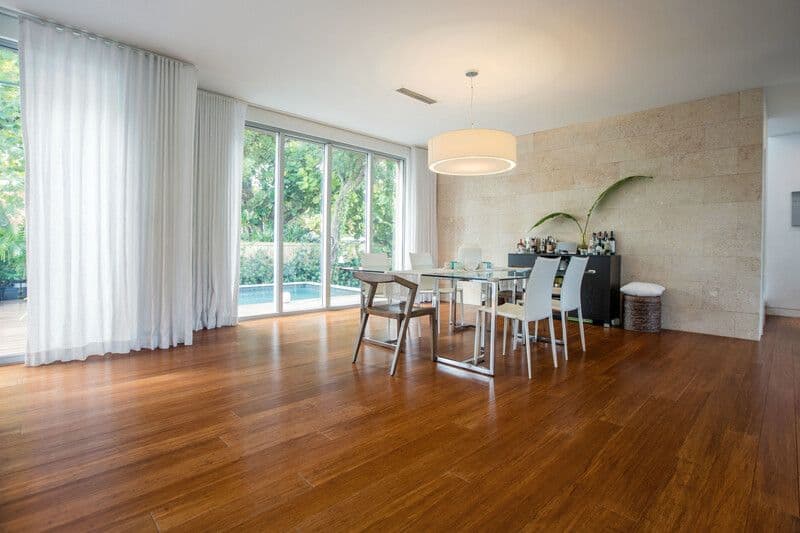
Bamboo Flooring Acclimation
Solid bamboo flooring usually requires a minimum of 5 days (longer for areas with low or high humidity) for acclimation. Proper acclimation allows floors to adjust to the conditions in which they'll be installed and allows the homeowner to mix and mingle planks, accounting for natural color variation in the bamboo. After the flooring has been properly acclimated, it can then be installed based on the method recommended by the manufacturer. Installation options often vary based on how the planks have been milled: Industry-standard tongue and groove (T&G) is the most versatile format, allowing for gluing, nailing, and floating. Click-lock milling, while beloved by DIY-ers for its simplicity, can only be glued or floated, not nailed down. CALI offers bamboo flooring that can be installed using all four methods: T&G, nailing, gluing, and floating. Regardless of the method used, it’s crucial that you or your installer follow the manufacturer's guidelines and properly acclimate planks to avoid any possible damage down the road.
Refinishing Bamboo Floors
Another common question asked by bamboo flooring shoppers is “Can it be refinished?” Traditional hardwoods have been around so long that homeowners have become programmed to brace themselves for the pain and anguish of a laborious refinishing process every 5-10 years. Not only is this a huge disruption in anyone's personal life, but it is also a difficult, expensive, time-consuming process that creates a hyper-awareness of every small imperfection in the floor. Strand-woven, aluminum-oxide finished solid bamboo flooring breaks this cycle due to its extreme resistance to denting and scratching. While it can be refinished, it rarely (if ever) needs to be.What’s more, the premium finish on a CALI bamboo or hardwood floor is covered by the 50-year residential warranty.
Check out all CALI flooring warranties here.
Bamboo Care and Maintenance
All of this prep work leads to one last consideration: How to keep bamboo flooring looking great for many years to come. Just like hardwood flooring, bamboo flooring performs best when kept free of dirt and debris, when homeowners use only a vacuum designed for hard surfaces, and never wet mop the floor/ You’ll also want to only use cleaning products that are recommended by the manufacturer. Light surface scratches (typically appearing as white lines) can be easily buffed out with a soft cloth and some cleaning product or disguised using a color-matched touch-up marker. For deeper gouges, a fill stick can be used prior to the touch-up marker. Keeping the home's relative humidity as consistent as possible and avoiding prolonged exposure of the floors to direct sunlight also helps minimize wear and discoloration.
Check out all CALI flooring maintenance guides here.
And get even more cleaning tips here!
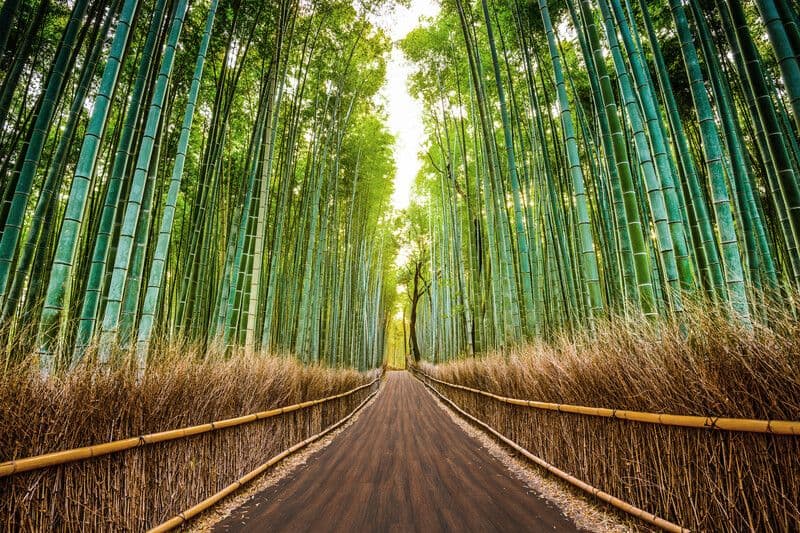
Bamboo flooring offers an appealing combination of sustainability, durability, and versatile beauty, making it a great choice for eco-conscious homeowners. However, its success depends on careful selection. To make an informed decision, it’s crucial to understand the differences between high and low-quality bamboo and consider aspects such as harvest age, the drying process, Janka hardness ratings, VOC levels, and adhesives. With proper selection, installation, and maintenance, bamboo flooring can make your home an eco-friendly haven you’ll always be happy to return to!
Related Articles
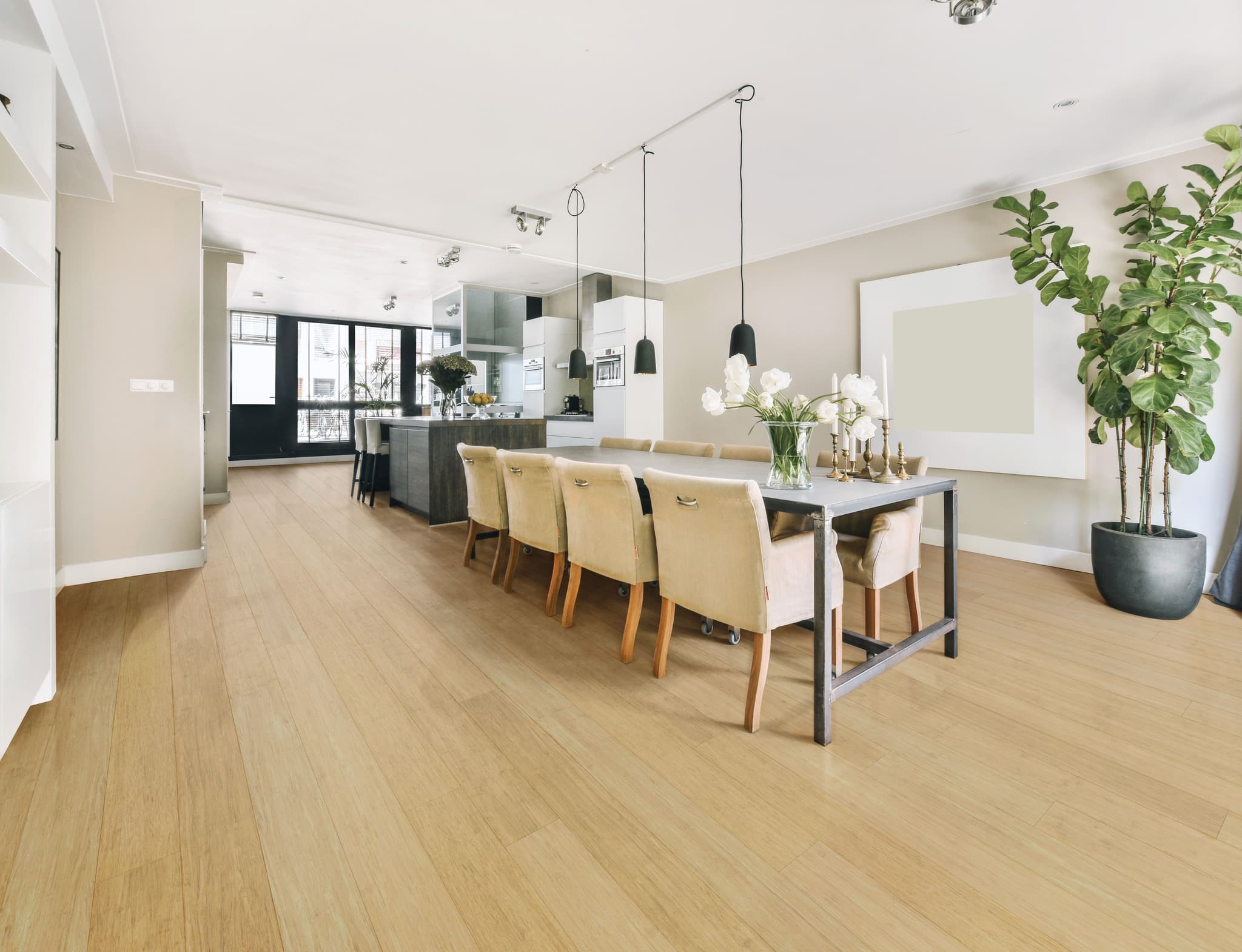
Eco-Friendly Products
Sustainable Flooring for a Greener Home
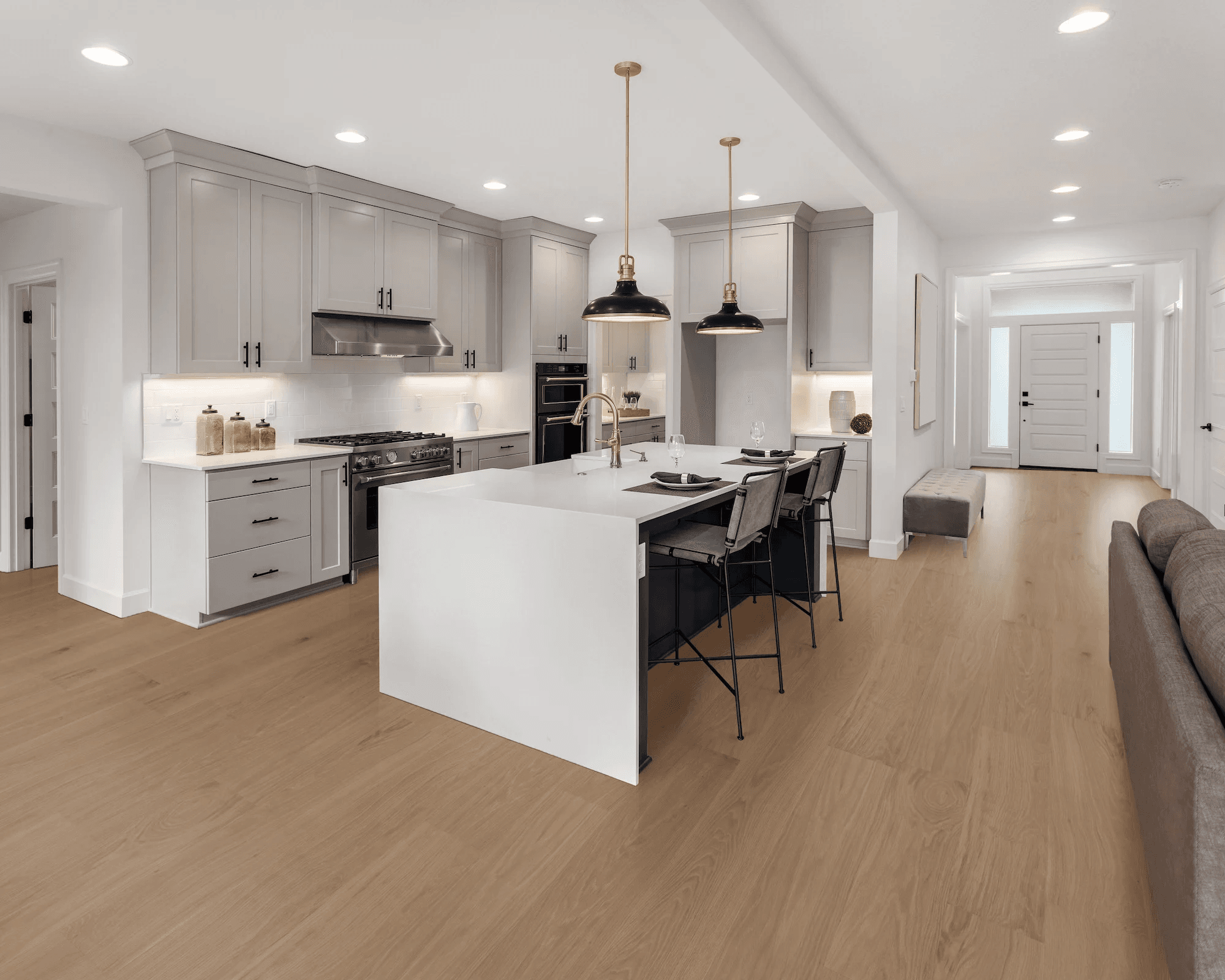
Eco-Friendly Products
How to Clean Bamboo Floors: A Step-by-Step Guide

Eco-Friendly Products










